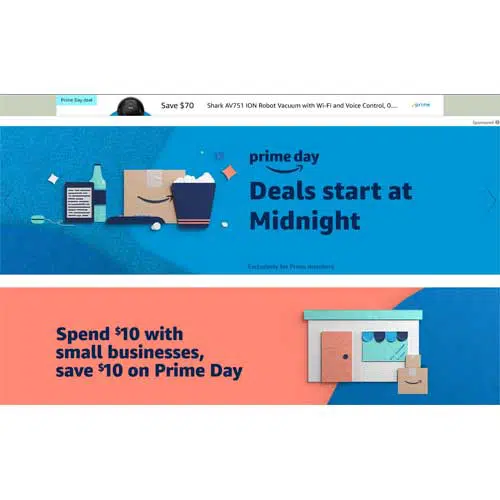After a more than two-month delay, Amazon Prime Day is poised to officially kick off early Tuesday. The two-day event, which was created to boost Prime memberships, will generate $9.91 billion in sales worldwide for Amazon, up 43% from last year’s event, according to the latest forecast from research firm eMarketer.
In comparison, shopping fests from other merchants, such as Target Corp.’s Target Deal Days and Walmart Inc.’s Big Save, are not expected to generate as many purchases as Amazon Prime Day, according to Coresight Research. More than 26% of consumers surveyed by Coresight the week of Oct. 6 say they expect to make a purchase during Amazon Prime Day, compared to one in 10 for the other three shopping festivals combined.
The annual online shopping extravaganza offers Prime members special deals. The event, created in 2015 and held every July since then until this year, has paid off handsomely for Amazon, swelling Prime membership to more than 150 million worldwide, up from 100 million in 2018 and 40 million in 2015, according to eMarketer. In the United States, the firm forecasts that Prime membership will grow about 15% to 142.5 million users in 2020, or more than 50% of the U.S. population. Earlier in the year, eMarketer forecast that prime members in the U.S. would total 133.1 million.
The Covid-19 pandemic appears to a factor in attracting more consumers to online shopping. For the week of Oct. 6, Coresight Research says 56% of respondents were avoiding shopping centers and malls, about the same percentage as the week before.

“The pandemic only seems to have underscored Prime’s utility as membership appears to be climbing in recent months,” eMarketer says. “According to our bimonthly Bizrate Insights e-commerce survey, Prime membership has grown across all age segments between February and June of this year—jumping from 69% to 81% among 18- to 34-year-olds, 63% to 68% among 35- to 54-year-olds, and 52% to 60% among adults 55 and older.”
The primary reasons for consumers to join Prime are fast delivery and access to Prime Video, which not only attracts new members, but helps retain them, eMarketer says.
In addition to increased membership, Prime members have boosted their frequency of purchases during the pandemic. In June, 23% of members were making between five and nine purchases a month, up from 21% in April, and 22% were placing 10 or more orders a month, up from 16% in April. Meanwhile, the number of members not placing any orders decreased in June to 8% from 10% in April, according to eMarketer.
“With Prime penetration already so high, recent gains have important long-term implications,” eMarketer says. “Because of an unanticipated external event, Amazon is getting difficult-to-acquire Prime customers off the sidelines and habituating them to the benefits of membership.”





